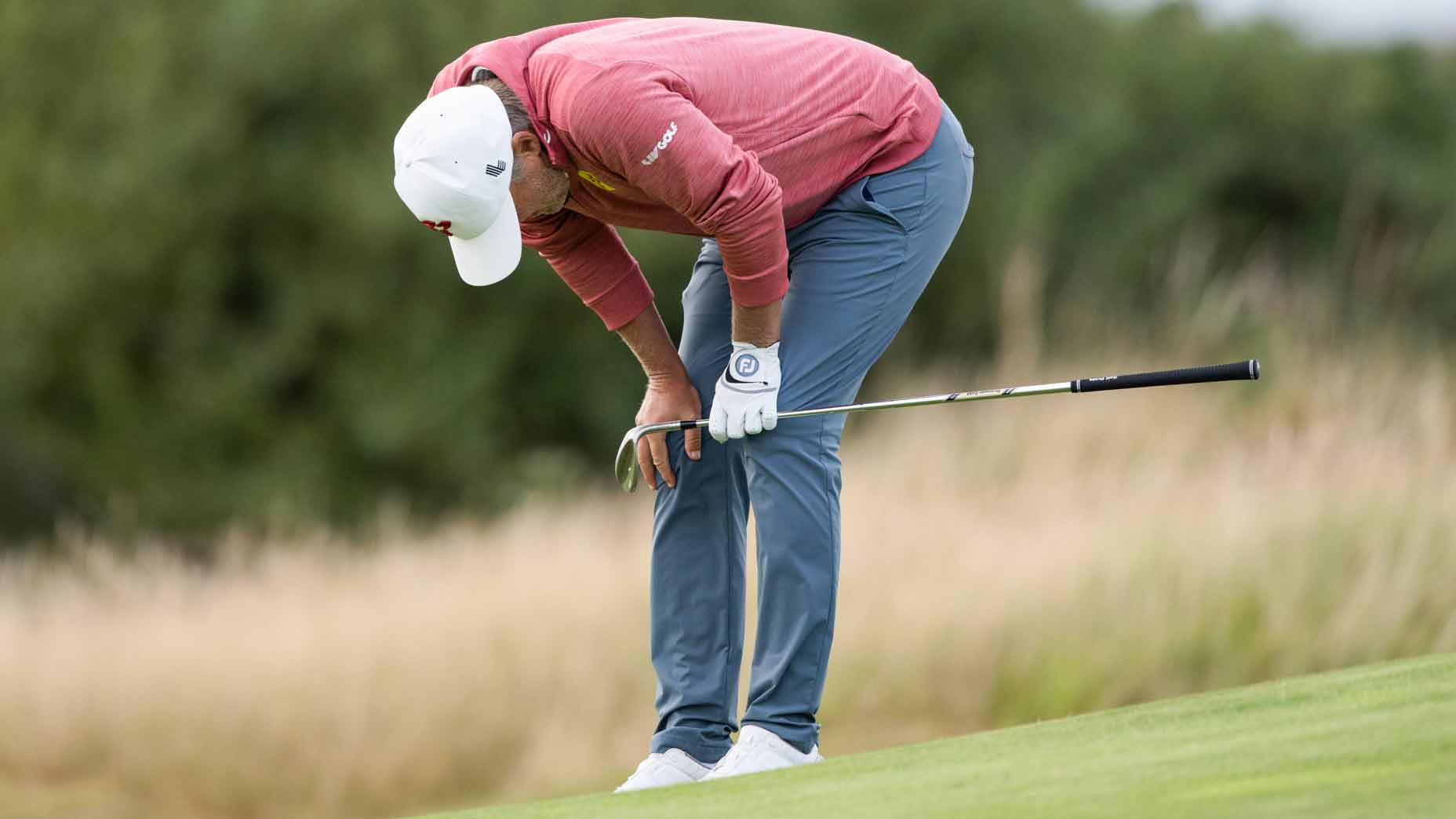It doesn’t matter how skilled you are, every golfer has experienced a shank before — meaning it comes off the inside heel of the golf club.
While shanking it never feels good and can cause frustration and added strokes, they can be avoided by making even the most minor adjustments. So take a look below to see what you can do to get rid of the shanks for good!
Stop shanking it by following these tips
Whether it’s you or a friend who has the case of the shanks, the problem is fixable. Like all things in the golf swing, it’s just a matter of cleaning up bad habits and replacing them with better technique. By following the 10 tips below, you’ll be on the right path.
1. Improve your posture
When there’s little to no space between the body and the club, your golf posture is wrong. This can often lead to contact with the heel of the club, which will produce a shank.
So how can you improve in this area? You need to bend from your hips so your arms hang straight up and down in a natural position, which will make it easier for your arms to swing underneath the shoulders. This helps create a great swing path, allowing the ball to make center-face contact.
2. Don’t use an open setup
If you tend to use an open setup, it can cause the ball to hit the heel of the club — especially if your natural reaction is to try to push the club more out and toward the target in an effort to get the ball to fly on the intended line. As you attempt to redirect the ball, the arms move out and away, contradicting the body and shoving the heel into the ball. I suggest using a more square-to-closed setup instead.
3. Avoid opening up your clubface
While most people tend to think an open clubface leads to a slice, it can also cause heel contact! That’s because an open face leads to less hitting surface on the club, and if you’re a player who comes over the top with their swing, that often drags the heel across the ball — leading to a shanked shot.
4. Stop being too linear
Once your setup is complete, most motions in the golf swing are circular, not linear. So if you think yours should be straight back and through, this incorrect linear swing line can lead to hitting the heel.
Instead, allow your backswing to have some circular motion — meaning your body naturally rotates — which gives you a much better chance at staying on plane and hitting the center of the clubface.
5. Avoid tension
Having tension in the golf swing is a death wish, as it can prohibit you from properly releasing the club and instead expose the heel to the ball. Instead, allow your hands to hold the club, not squeeze it.
To get the proper feel, practice holding the club while closing your fingers (but not squeezing them). Simply move the clubhead back and forth in a circular motion, feeling how the wrists move.
6. Don’t use too much shaft lean at address
Some shaft lean is OK, but having excessive shaft lean at either address or impact can lead to a shank for a number of reasons. First, it can place the heel of the club closer to the ball — especially if the shaft lean opens the clubface. Second, by leaning the shaft, it can add tension to the lead arm, which, as stated above, makes it hard to release the club.
7. Use more hybrids
A hybrid offers a little more forgiveness, so even if you hit it off the heel, it doesn’t react like a shank with an iron. For this reason, I suggest incorporating more hybrids into your rounds.
I often suggest practicing with a hybrid on the range to help build confidence (here’s one option to check out). Even if you’re not hitting it perfectly, it should produce better results than an iron, while allowing you to swing the clubhead freely.
8. Use higher-lofted wedges instead of opening the clubface
The beauty of a higher-lofted wedge (like a 58 or 60) is that when you need to hit a high, soft shot, you don’t need to drastically open the clubface. By naturally allowing the club to work for you, you’ll protect yourself from mishits off the heel.
9. Practice with a training aid
If I see a student starting to hit shanks, I quickly put a training aid on the outside of the ball — like an alignment board — which helps guide them away from making heel contact. This simple visual allows them to react quickly and make instant adjustments, providing them with the feel of the clubhead crossing the center line of the golf ball.
10. Utilize alignment sticks
Alignment sticks can be helpful for a number of different reasons (you can buy some here), especially since they’re so versatile. Whether you’re using them to help with your swing path or body movements, these simple aids are a great way to correct issues with your golf game.
